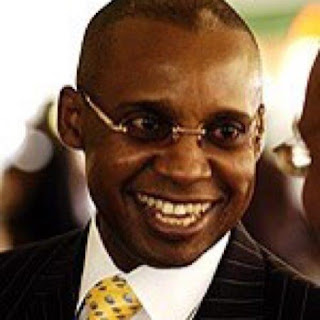This is East Africa’s Wall Street
 |
| KCB Group Towers on Hospital Road |
 |
| Equity Centre on Hospital Road |
As one turns into Hospital road, there is NCBA Annex, which stands like a teammate ready rush forward and strike the ball into the goal should the goalkeeper’s save bounce back.
We are not talking about Soccer here.
We are talking about the Most Powerful financial district in
East and Central Africa and, perhaps beyond. This stretch, hardly a Kilometre long,
hosts East and Central Africa’s financial giants.
Kenya’s top three banks, with a combined capitalization of
roughly US$20 billion live on this prestigious address in the region’s
financial market. These are Kenya Commercial Bank Group, KCB; Equity Group
Holdings EGHL; and NCBA Group. KCB Group is capitalized at US$8.4 billion; EGHL
at $6.8 billion and NCBA group at $4.4 billion.
They are not the only
behemoths in the financial world living in this hardly a kilometer square area. There
are also such giants in the insurance industry as CIC, and Britam Kenya, Kenya
Re, ZEP Re, and Africa Eagle Insurance Brokers and UAP- Old Mutual.
To complete the
picture, the World Bank Group, Shelter Afrique, and Africa Development Bank,
AfDB, also live here.
There are also smaller players as Dubai Islamic Bank Kenya, Bank
of Rwanda, Spire Bank, KWFT Bank, and Geminia Insurance in the neighborhood.
The top three banks have a combined 740 branches in East and
Central Africa. While the insurances companies have in the upwards of 100
branches in the region. Therefore, if Nairobi’s Upper Hill area sneezes, the
entire region catches a financial cold.
Apart from their
large Branch network, the top three banks have contributed in a large way to the
expansion of financial inclusion in the region. Except in DR Congo, where
financial inclusion is still in teen twenties, financial inclusion rates range
between teen sixties and Nineties in East Africa.
They achieved this feat largely due to the adoption of Financial
Technology apps such as M-PESA, the mobile banking app developed by Safaricom,
East Africa’s cell phone giant. This is how, NCBA group, for instance, is the
third-largest bank in the region capitalized at US$4.44 billion boasts of 41
million accounts, 39 million of which are Mobile money accounts. This is the
largest account base in Africa.
The top two banks, KCB and EGHL, and particularly Equity,
cut their eyes by targeting the low-income groups which were considered
“unbankable” by the then “Mainstream banks”-a euphemism for MNC banks,
Stanchart and Barclays, which then dominated the market.
Equity- once described as a “River Road Bank led by a
genius” is the real “back- street rat.”
It was the first bank to “hawk Accounts”- just setting up a table on the
street and inviting customers to open accounts without any deposit. It also
opened branches in Nairobi’s back streets leaving the high street to the “mainstreamers.” The gamble paid off for soon, other banks – including the”
mainstreamers” followed suit.
Equity then moved to agency banking, where other businesses
such as Pharmacies, Hardware stores, and M-Pesa Kiosks, were trained in banking
operations and earned commissions for taking deposits and paying withdrawals.
Others also followed suit. The result: Banking services were getting closer to
the people cheaply. Today, nearly 90 percent of adult Kenyans have access to
banking services, close by, in some instances, in their pockets!
So the first benefit of this dominance will be Improvement
in financial inclusion and the spread of alternative revenue streams for any
enterprising business or woman in the region. KCB Group and Equity are experts in this line.
In fact, they grew to the top perch by banking the “unbankable”- the street
vendors, hawkers, and lowly paid workers!
It is this lot that
dominates the economy of East and Central Africa. So for them, the unbankable
is a hanging fruit, especially in D R Congo where Equity will have a dominant
presence. Another mouthwatering market in Ethiopia, which is slowly opening up
to the World. The “unbankable” dominate here and could do with the services of
“back street rats” such as Equity Bank.
Financial inclusion
in D R Congo, stands at 26 percent according to The Banker magazine and in Ethiopia, it stood at 33 percent in 2016,
according to Research Gate. This is
why they are hanging fruits for ” back street banks” such as Equity which has
an avowed goal of being a Pan-African Multinational bank- and is pursuing it with
a gusto!
In D.R. Congo Equity, has already established 2100 banking
agents, despite being the seventh-largest bank in that country. It has been
contracted by FSD to train another 4000 over the next three years in a $2.8
million deal. But Equity
does not need any prodding to go down that street. That is its specialty. Coupled with the spread of mobile telephony, Equity will hit D R Congo and other new markets in Africa running.
Here, James Mwangi, the CEO of Equity Bank, is likely to face-off
with his apprentice, the KCB Group CEO, Joshua Oigara, who cut his eyes at
Equity. KCB has ambitions of spreading its
wings further in Africa although it has yet to make its intentions public.



Comments
Post a Comment